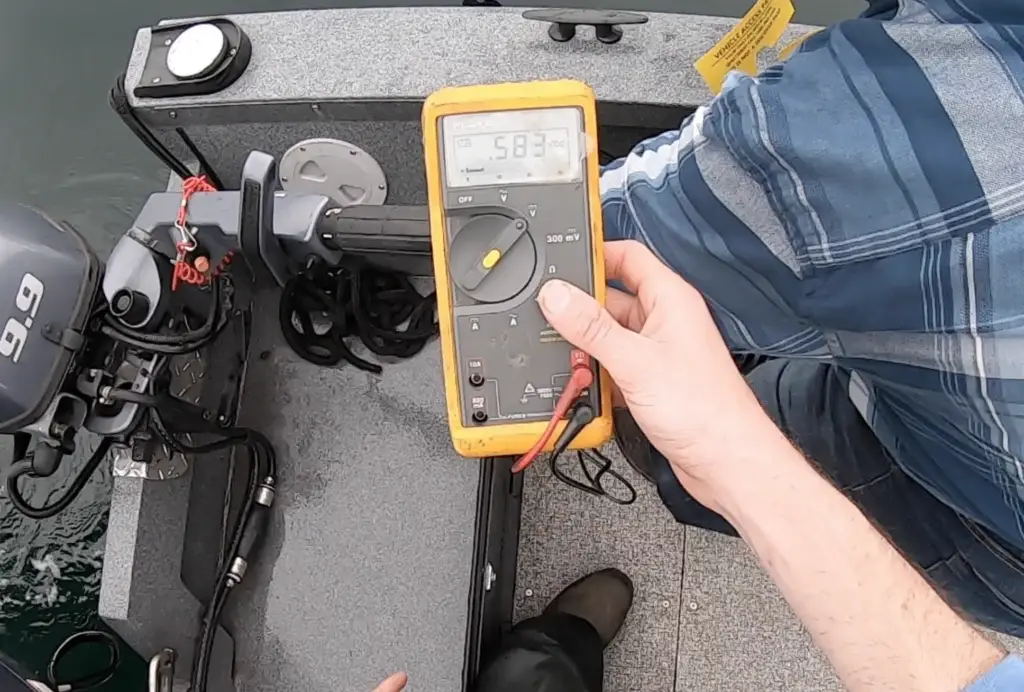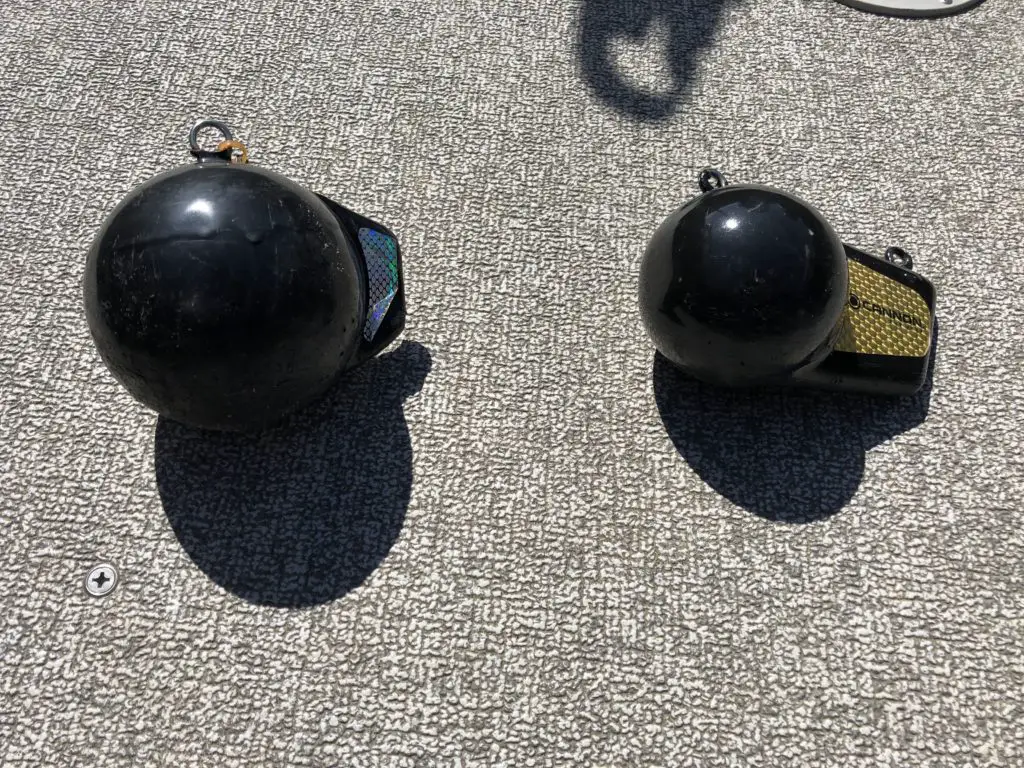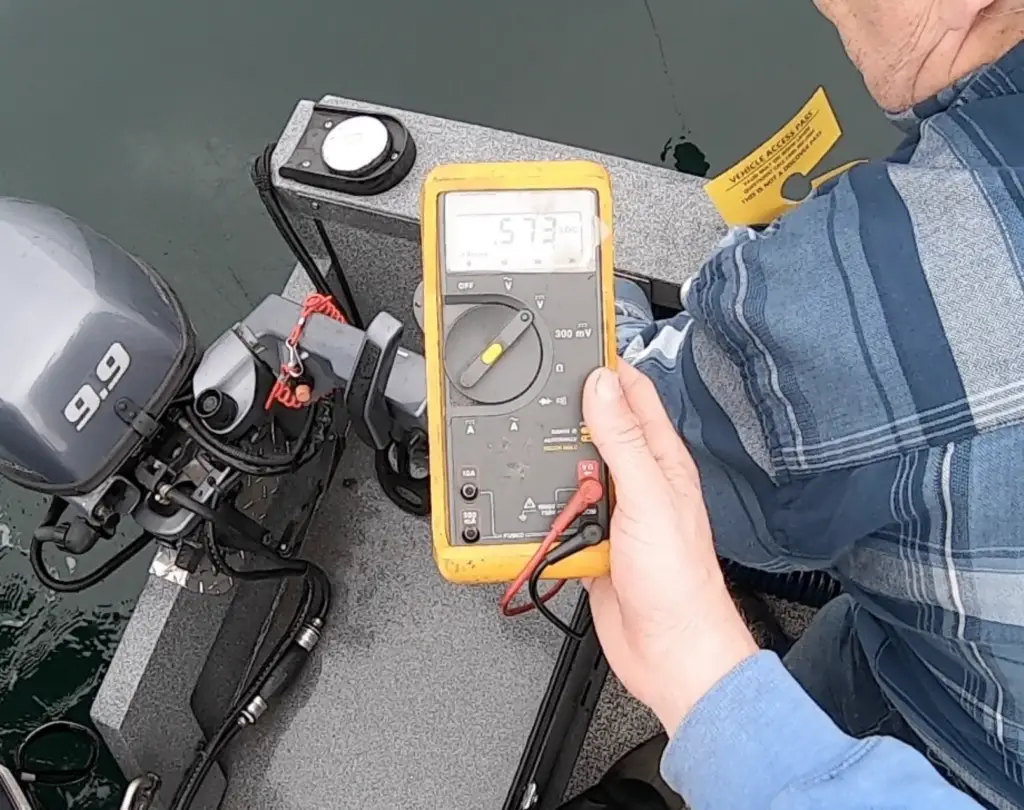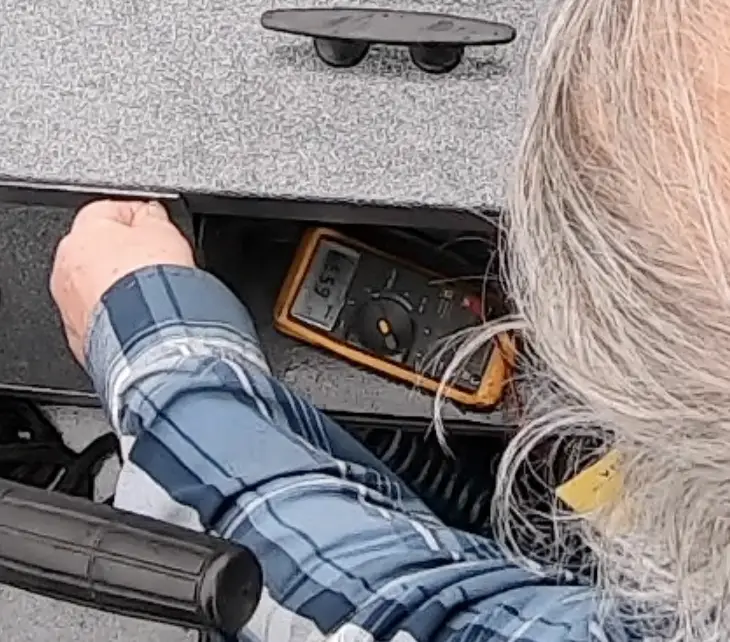
Are you repelling fish with your downrigger wire? Just switch to braid right? You don’t have this concern of repelling fish with braid, but you also don’t have the advantage of attracting fish with the electrical charge being put out by your downrigger wire either.
If you had a bad season of fishing with wire, are you worried that a mystery electrical issue is the root cause?
For one thing, the Nisqually run of fish was not as good in 2018 as it was in 2017, but other South Sound runs were just fine. And while some folks I talked with had equally challenging results, there were several others, fishing the same areas I was fishing, who did just fine. So I had to consider that my issues were on me, not on the broader conditions like the number of fish, etc.

One of my biggest changes from 2017 to 2018 was that I targeted blackmouth in the winter time and with that, I purchased 15 lb downrigger balls to help me get to the bottom vs the 12 lb balls I had been using.
Notice anything different besides the size of the ball? The 15 lb ball has an exposed metal ring, while the 12 lb ball is covered via plastic coating like the rest of the ball. What difference does this really make?
Well, according to experts, Chinook / Kings like an electrical charge of .60 volts. Anything higher than that may repel fish.
Lower than that, and it has less attraction effect. Coho on the other hand like an electrical charge of .65 volts.

So, the above reading of .573 was on the original DR balls I was using in 2017. Some of the coating has come off, but they are still mostly coated and below the voltage limit for Chinook. All good right?

The above pic may be tougher to see, but the reading was .65 on the 15 lb ball with the exposed steel ring! This could have absolutely affected what I was doing last year. It could also explain some of the great success I had with Coho during the Salmon for Soldiers fishing event where we couldn’t keep the Coho off our lines going 5 for 8 during that event.
So all this is great, but how does this help you if you may be in a similar position? We will go through the following in the rest of this article to help you out:
- Description of how to perform the voltage test
- Explanation of how to protect DR balls with exposed metal
Performing the Voltage Test
A Digital Multimeter is what you see pictured in these voltage tests and is pretty cheap to buy. Here’s a Digital Multimeter I found on Amazon for a reasonable price. Here are the steps/conditions of the test we performed:
- Motor out to the fishing grounds. Don’t try to perform this test near the launch or in the Marina as other boats’ stray voltage could impact your results
- Attach the downrigger ball you want to test, release 70 ft of wire and put your trolling / kicker motor in gear just as if you were fishing.
- Hold the negative end of the multimeter to the boat hull. We put in on a nearby screw-head since most of the exposed metal is powder coated.
- Hold the positive end of the multimeter to the downrigger wire of the ball that’s in the water.
Don’t like the voltage reading? Continue reading for some ideas on how to lower your voltage reading.
Coating exposed DR Balls
I was able to change the voltage reading on my 15 DR Balls by coating the exposed rings with this awesome stuff called Plastidip. Plastidip is cheap and incredibly easy to apply. After 3-4 coats with 30 minutes in between and then waiting another 4 hours, the new plastic coating is dry and ready to go!

Problem solved! Now, the question that is bothering me is whether I should scrape it off after I’m done fishing with Kings, to have a higher voltage when targeting Coho. 🙂